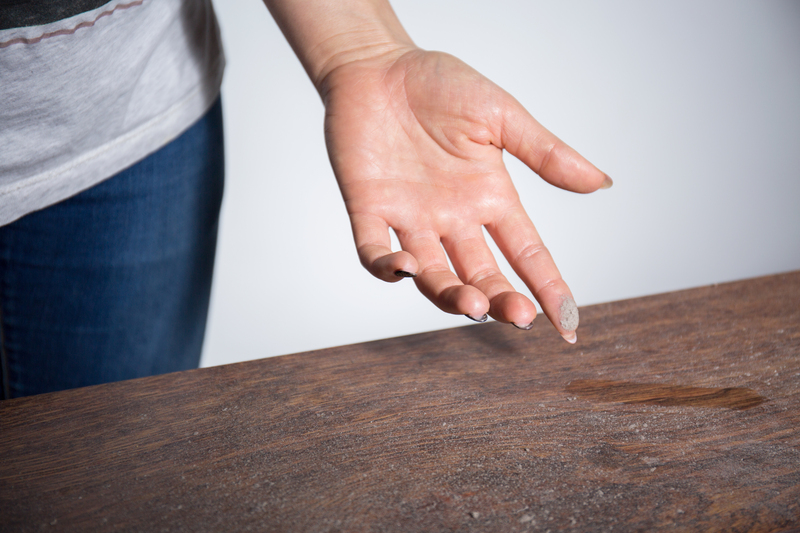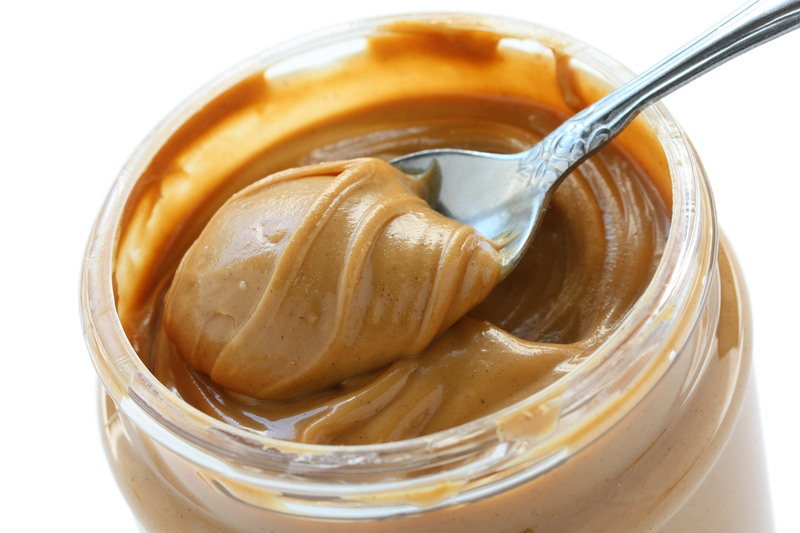Essential Guide to uPVC Window Frame Maintenance
Posted on 20/09/2025
Essential Guide to uPVC Window Frame Maintenance
uPVC window frames have rapidly become a favorite among homeowners and builders alike. Renowned for their durability, affordability, and energy efficiency, uPVC windows offer a range of benefits over traditional wooden or aluminum alternatives. However, to ensure these windows stand the test of time, proper and regular maintenance is critical. This comprehensive guide delves into everything you need to know about maintaining your uPVC window frames--from routine cleaning to troubleshooting common problems. Whether you are a seasoned homeowner or a first-time uPVC window owner, this essential guide will help you extend the life and beauty of your windows.
Understanding uPVC Window Frames
Unplasticized Polyvinyl Chloride (uPVC) is a type of plastic widely used in the construction industry, especially for window frames. Unlike wood, uPVC does not rot, warp, or require repainting, making it a low-maintenance alternative. However, low maintenance does not mean no maintenance! Over time, dirt, weather, and pollutants can take a toll on the frame's appearance and functionality.
Key Features and Benefits of uPVC Windows
- Durability: Resistant to weathering, rot, and corrosion.
- Energy Efficiency: Excellent insulation properties reduce heating and cooling costs.
- Low Maintenance: Requires minimal upkeep compared to wood or metal frames.
- Noise Reduction: Effective at reducing outdoor noise.
- Cost-Effective: More affordable than many other window framing options.
While the advantages are substantial, ensuring your windows retain these benefits hinges on regular, proper maintenance.

Why Maintenance of uPVC Window Frames Matters
Many homeowners are attracted to uPVC windows because of their reputation for being easy to care for. Nevertheless, several factors can compromise their performance and appearance over time. Neglecting uPVC window frame maintenance can lead to:
- Accumulation of grime and stains diminishing visual appeal
- Fading or discoloration due to UV exposure
- Sticky or jammed window mechanisms from debris buildup
- Reduced energy efficiency as seals degrade or frames lose integrity
- Mold or mildew growth, especially in frames exposed to moist or damp conditions
Regular care and timely intervention can prevent most of these issues, ensuring your windows stay attractive and functional for decades.
Step-by-Step Guide to UPVC Window Frame Maintenance
1. Routine Cleaning
Frequency: Clean your uPVC window frames at least once every three months--or more often if you live in a polluted or coastal environment.
-
Tools needed:
- Soft cloths or sponges
- Mild dish soap
- Bucket of warm water
- Soft brush (for stubborn dirt)
- Vacuum with a brush attachment
Step-by-step Instructions:
-
Remove Surface Dust:
Use a vacuum with a brush attachment or a soft cloth to wipe away loose dust and debris from the frames and corners. -
Clean the Frames:
Mix a small amount of mild dish soap in warm water. Dip a soft cloth or sponge in this solution and gently wipe the uPVC frames. Avoid abrasive pads that can scratch the surface. -
Scrub Stubborn Stains:
For ingrained dirt, use a soft brush. Stubborn marks can usually be tackled with a bit of extra effort but always avoid harsh chemicals like bleach or abrasive powders. -
Rinse Off:
Wipe the surface with another clean cloth dampened with fresh water to remove any soap residue. -
Dry Thoroughly:
Use a dry, lint-free cloth to ensure the frames are completely dry. This step helps prevent dust from sticking and water stains forming.
2. Maintain the Moving Parts
In addition to cleaning the frames, proper uPVC window maintenance involves caring for the hardware and moving parts. This includes handles, hinges, locks, and the opening mechanism. Over time, these parts can gather dust, dirt, or even become rusty if not looked after.
-
Lubricate Hinges and Locks:
Use a silicone-based lubricant to ensure smooth operation. Do not use oil-based sprays as they attract dust and can gum up over time. -
Check for Tightness:
Periodically tighten any loose screws in the hardware to prevent wobbling or misalignment. -
Clean the Tracks:
For sliding uPVC windows, regularly vacuum and wipe out the tracks to prevent blockages and scratching.
3. Inspect and Clean Window Seals and Gaskets
The seals and gaskets around your uPVC windows are vital for insulation and preventing water ingress. Damage or dirt on these can lead to drafts, leaks, and reduced efficiency.
- Wipe seals with a damp cloth to remove dirt and debris.
- Inspect regularly for cracks, hardening, or shrinking. Replace damaged gaskets promptly.
- You may lightly apply silicone spray to keep seals supple and prolong their lifespan.
4. Addressing Discoloration and Stains
Despite being highly resistant to fading, UPVC window frames can become discolored over time due to environmental pollution, bird droppings, or tree sap. For tough stains:
-
Try a Specialized Cleaner:
Use a uPVC-specific cleaning solution available from home improvement stores. -
Non-abrasive Cream:
In the absence of commercial cleaners, a small amount of non-abrasive cream cleaner can be applied with a microfiber cloth. - Never use steel wool, solvents, or scouring pads, as these will damage the surface and void any warranties.
Common uPVC Frame Problems and Solutions
Condensation Issues
Condensation on or within the windows can be unsettling. Usually, this is a sign of high humidity inside or an issue with the double glazing seal.
- Keep rooms well-ventilated to reduce internal moisture.
- If you notice condensation between double or triple glazing panes, this indicates a failed seal--contact a professional for repair.
Stiff Handles or Difficulty Opening Windows
- Regularly lubricate moving parts as discussed above.
- If lubrication doesn't help, check for warped frames or misplaced screws and adjust as needed.
Leaking or Draughty Frames
- Inspect seals and gaskets for gaps or deterioration.
- Ensure frames are properly aligned and screws are tight.
- Replace weather stripping if necessary.
Yellowing or Discoloration
- Use a specialist uPVC cleaner. Avoid bleach and harsh abrasives.
- Prevention is easier--clean frames regularly and avoid prolonged contact with harsh chemicals.
Advanced Maintenance Tips for uPVC Windows
Taking great care of your uPVC window frames doesn't just mean cleaning. Here are more advanced strategies to maximize their longevity and appearance:
-
Regular Professional Inspections:
Every 3-5 years, consider having a professional inspect your windows and frames for any early signs of damage or seal failure. -
Pest Control:
Ensure no insects or pests are making a home in window corners or tracks, which can damage seals or cause blockages. -
Environmental Protection:
If you live near the sea (where salt air prevails) or in a city (with higher pollution), routine maintenance may need to be more frequent to prevent build-up and staining. -
Prevent Impact Damage:
Take care to avoid banging or scratching frames with furniture or heavy landscaping tools--such accidents can crack or dent the uPVC. -
Consider Protective Coverings:
For areas prone to intense sunlight, you might use blinds or window films inside to reduce UV exposure and keep uPVC frames whiter for longer.
Top Maintenance Mistakes to Avoid
-
Using abrasive tools or cleaners:
Scrapers, steel wool, and harsh chemicals can scratch or dull uPVC. *Always* stick to soft cloths and mild detergents. -
Neglecting moving parts:
Failing to regularly lubricate hinges and locks can cause them to seize up over time. -
Delaying repairs:
Small issues like cracked seals or loose handles quickly worsen if ignored. -
Overlooking exterior frames:
Most people only clean the indoors. Be sure to maintain the external frames as well, especially after storms or pollen-heavy seasons.
When to Call a Professional for UPVC Window Care
Most day-to-day uPVC window maintenance can comfortably be handled as a DIY task. However, certain scenarios are best left to professionals:
- Misted or blown double glazing units: If moisture forms between the panes of double or triple glazing, it's a sign of failed seals and requires professional repair or replacement.
- Extensive mechanical issues: If frames have warps, the closing mechanism is broken, or there's significant structural damage.
- Comprehensive resealing: For whole window units where the gaskets or weather seals have degraded extensively.

Frequently Asked Questions About uPVC Window Frame Maintenance
-
Can you paint uPVC window frames?
While it is possible to paint uPVC, it requires specialist paint and preparation. Painted uPVC is more prone to peeling and may void warranties, so consult a professional first. -
What if my window frames are badly scratched?
Light scratches can sometimes be polished out with a uPVC cleaner, but deeper gouges may require professional restoration. -
How long do uPVC windows and frames typically last?
With proper care and regular maintenance, uPVC windows can last 20-35 years or longer.
Conclusion: The Value of uPVC Window Maintenance
Proper maintenance of uPVC window frames not only keeps your home looking bright and beautiful but also enhances energy efficiency and extends the lifespan of your investment. By following the step-by-step care routines, addressing minor problems before they escalate, and avoiding common mistakes, you can enjoy all the benefits that uPVC window frames have to offer--year after year.
Remember, a well-maintained uPVC window is an asset to any property. Dedicate a little time each season, and you'll reap the rewards in comfort, aesthetics, and savings.
For more insights on window care, home improvement, and energy-efficient living, explore our other expert guides and handy tips.




